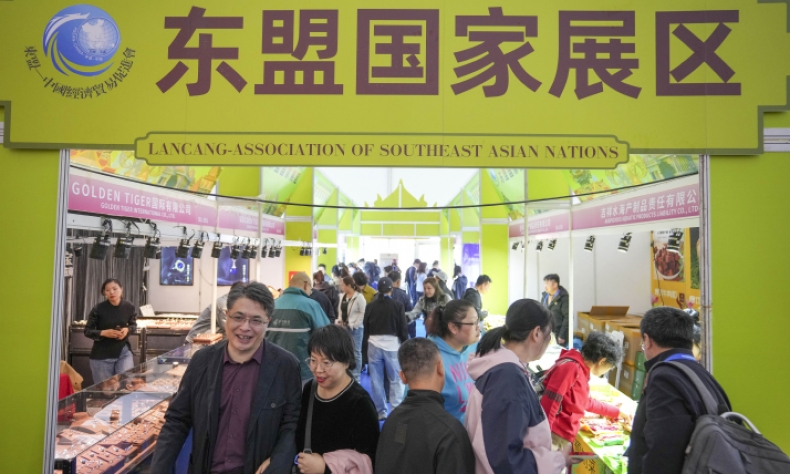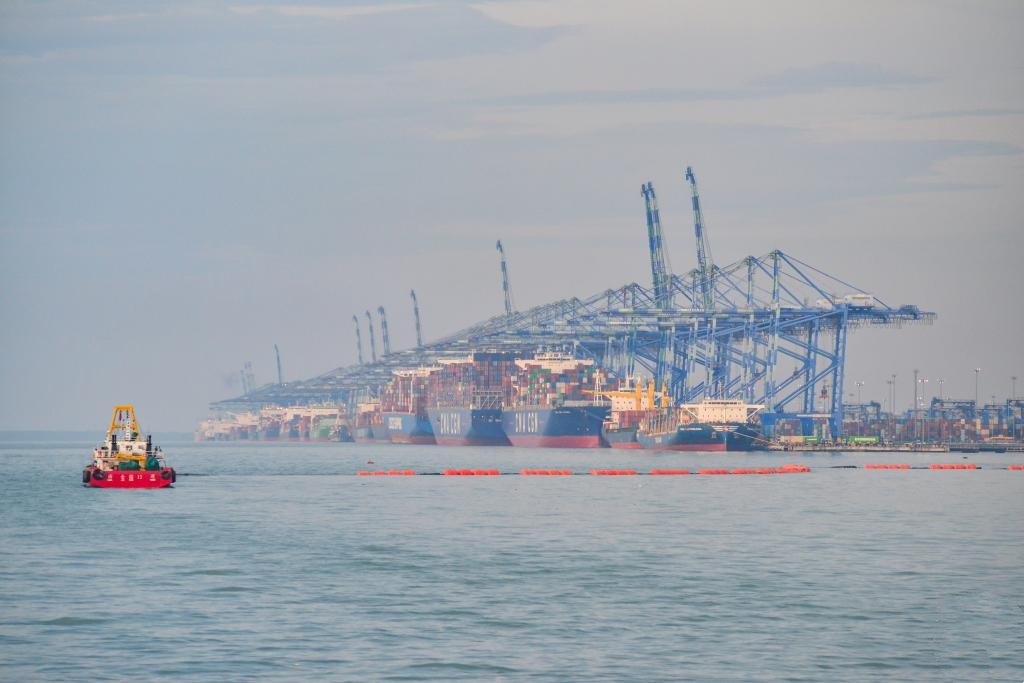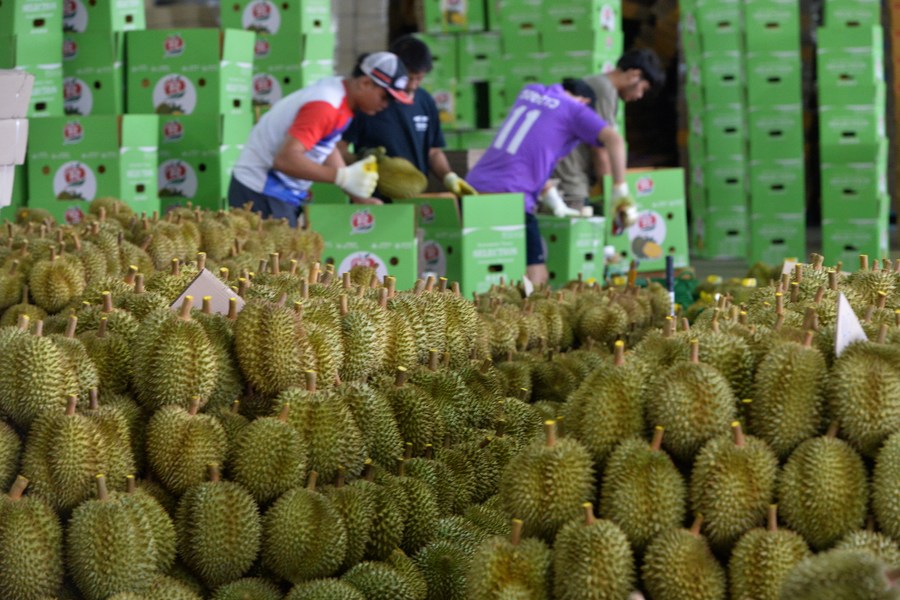Anchoring the RCEP in Openness

Guided by the principles of upholding free trade and fostering regional and multilateral economic and trade cooperation, it is essential to accelerate high-level implementation of the RCEP to shape a new future for Asia’s economy.
The Regional Comprehensive Economic Partnership (RCEP) is a significant achievement in Asia’s exploration of and efforts toward regional economic integration. (The RCEP is a free trade pact comprising the 10 ASEAN member states and their five trading partners, namely China, Japan, the Republic of Korea, Australia and New Zealand. The landmark RCEP is the world’s largest free trade deal to date. The RCEP countries account for roughly 30 percent of the world’s GDP and population—Ed.) It integrates regional economic and trade cooperation mechanisms, demonstrates the determination and abilities of Asian countries to promote open cooperation, serves as an important driving force for advancing regional economic integration, and injects certainty into the evolving global economic and trade landscape.
At present, economic globalization is facing challenges, and the evolution of profound changes unseen in a century is accelerating. The uncertainties affecting global economic growth have significantly increased. Implementation of the RCEP has entered a critical phase in which it is imperative for all parties to urgently overcome these challenges and strengthen collective efforts. Guided by the principles of upholding free trade and fostering regional and multilateral economic and trade cooperation, it is essential to accelerate high-level implementation of the RCEP to shape a new future for Asia’s economy. In this process, China’s orderly advancement of voluntary and unilateral opening-up will play an important role in supporting the high-level implementation of the RCEP.
Key driver of regional integration
Tangible benefits have emerged in the three years since the RCEP’s implementation. For example, trade creation effects have begun to emerge. In 2024, global trade increased by 3.3 percent year on year, and the total trade within the RCEP region rebounded by approximately 3 percent. Laos, Myanmar, Cambodia and Indonesia saw the fastest growth rates. Compared to 2021, their intra-regional trade volumes in 2024 increased by 72.4 percent, 40.4 percent, 26.0 percent and 19.2 percent, respectively.
Trade in intermediate goods within the region grew rapidly. The proportion of intermediate goods trade in the total trade within the RCEP region rose from 64.5 percent in 2021 to about 66 percent in 2023. RCEP member countries have experienced rapid development in the services trade. From 2011 to 2023, the total import value of services trade in the RCEP region increased from $870 billion to over $1.5 trillion, an increase of 79 percent with an average annual growth of 4.6 percent. The total export value of the services trade increased from $760 billion to over $1.3 trillion, an increase of about 76 percent with an average annual growth of 4.5 percent.
The RCEP region is the destination of over 30 percent of foreign direct investment flows globally. In 2022, the RCEP significantly unlocked trade growth potential within the region by lowering institutional transaction costs. In 2022, while global foreign direct investment (FDI) flows declined by 12.4 percent, FDI inflows into the RCEP region defied the trend, rising by 13.9 percent to reach $531.11 billion. Development of regional value chains is being actively promoted. In 2023, Global Value Chain (GVC) trade within the RCEP region dropped to $1.32 trillion, but still increased by 4.6 percent compared with 2021. The overall GVC participation rate in the RCEP region rose from 46.7 percent in 2021 to 49.4 percent in 2022 and 48.1 percent in 2023.

High-level implementation of the RCEP has entered a critical phase. For example, an endogenous and unified market within the RCEP region has yet to form. RCEP economies have largely exhibited export-oriented characteristics. For example, the U.S. took over 16 percent of total consumer goods exports from RCEP economies from 2021 to 2023, while China maintained a share of around 9.25 percent. Utilization rate of the RCEP rules of origin (RoO) among ASEAN members is relatively low. In 2023, Viet Nam’s export utilization rate under the RCEP was only 1.26 percent, still far below its average FTA export utilization rate of 37.4 percent. Thailand and Malaysia reported export utilization rates at 2.7 percent and 0.07 percent respectively.
Also, the regulatory standards of RCEP provisions require improvement. Coverage of tariff reductions remains relatively limited, and the phasing-down period is still relatively long. Openness in trade in services and investment also needs to be further improved. Regulatory standards of the RCEP on emerging issues require enhancement. The RCEP’s implementation mechanism needs to be improved. The RCEP Secretariat, as well as the RCEP’s governance and implementation mechanisms, need to be strengthened. Currently, the binding force of certain RCEP provisions remains low, and the dispute settlement mechanism also requires improvement.
Still, we are jointly building the largest high-level free trade area through pragmatic action. First, we must establish a regional platform for open cooperation with ASEAN centrality. Over the next three to five years, accelerating high-level implementation of the RCEP, highlighting ASEAN centrality, and more fully utilizing its comparative advantages within the larger regional market will help overcome the constraints of relatively small market size. Facing tasks such as clause upgrades and dispute coordination, upholding the “ASEAN Way” of emphasizing flexibility, negotiability and cooperation when facilitating the RCEP’s higher-level implementation and accelerating the integration of the broader Asian regional market is essential.
Second, efforts should be made to promote the upgrading of the RCEP and improve its governance system. This includes accelerating the implementation of existing RCEP provisions, expanding the scope of covered issues, and boosting the development of the RCEP’s governance mechanisms.
Third, free trade in the Asia-Pacific region is advancing with the RCEP serving as a key driver. This involves promoting the synergistic development of the RCEP and the China-ASEAN Free Trade Area (CAFTA) 3.0, striving for major breakthroughs in China-Japan-ROK free trade progress through high-level implementation of the RCEP, and leveraging the RCEP platform to support the advancement of the APEC agenda.

Integration through openness
The opening up of China’s market has become an important driving force for Asian economic integration. In 2024, service consumption accounted for 46.11 percent of total consumption by urban and rural residents in China. This proportion is expected to exceed 50 percent by 2030, creating a new trillion-dollar service market and significantly increasing demand for service supply from other Asian economies, driving a shift from a division pattern of “Asian production and global consumption” to a new pattern of “Asian production and Asian consumption.” Against the backdrop of increasing economic fragmentation and rising trade protectionism worldwide, China’s proactive expansion of imports from the RCEP region will provide significant momentum for regional development within the RCEP.
China’s unilateral opening up of its big market of 1.4 billion people to ASEAN will benefit millions as it works to optimize China-ASEAN trade structure through expanding imports. In the next three to five years, China’s promotion of full coverage of zero tariffs on imported consumer goods from ASEAN and expansion of imports of labor-intensive manufactured goods with a focus on final consumer products will promote balanced trade between China and ASEAN and optimize the production and supply chain structure within the RCEP region. We should also promote unilateral market opening up for ASEAN’s intermediate goods to deepen supply chain integration.
In terms of primary product processing, China should increase its overseas investment operation in ASEAN and encourage and support its enterprises to establish supply chain alliances with upstream and downstream ASEAN partners through signing bilateral cooperation agreements. Additionally, efforts should be made to strategically develop hi-tech industrial chains and reduce trade barriers by aligning standards and regulations.
China should advance unilateral opening up of its services trade and investment to ASEAN and unilaterally implement a negative list system for cross-border services trade and foreign investment access between China and ASEAN. This will develop and implement a more streamlined negative list, a list of sectors or industries in which foreign investment is restricted, prohibited or subject to specific conditions, for foreign investment access to ASEAN. It will expand investment access, particularly by gradually opening up sectors such as Internet information services, legal services, healthcare and culture. Adopting more flexible management measures, exploring models for foreign investment access under specific conditions, and promoting industry opening through a gradual approach would be optimal. The goal is to strengthen regional financial cooperation, enhance the financial safety net, and promote cooperation in trade financing and local currency payment settlement.
This article was written by the China Institute for Reform and Development (CIRD) research team. Members of the CIRD research team include: Chi Fulin, Yang Rui, Kuang Xianming, Wang Yuehong and Jin Ye.
 Facebook
Facebook
 Twitter
Twitter
 Linkedin
Linkedin
 Google +
Google +










